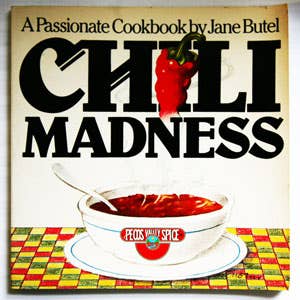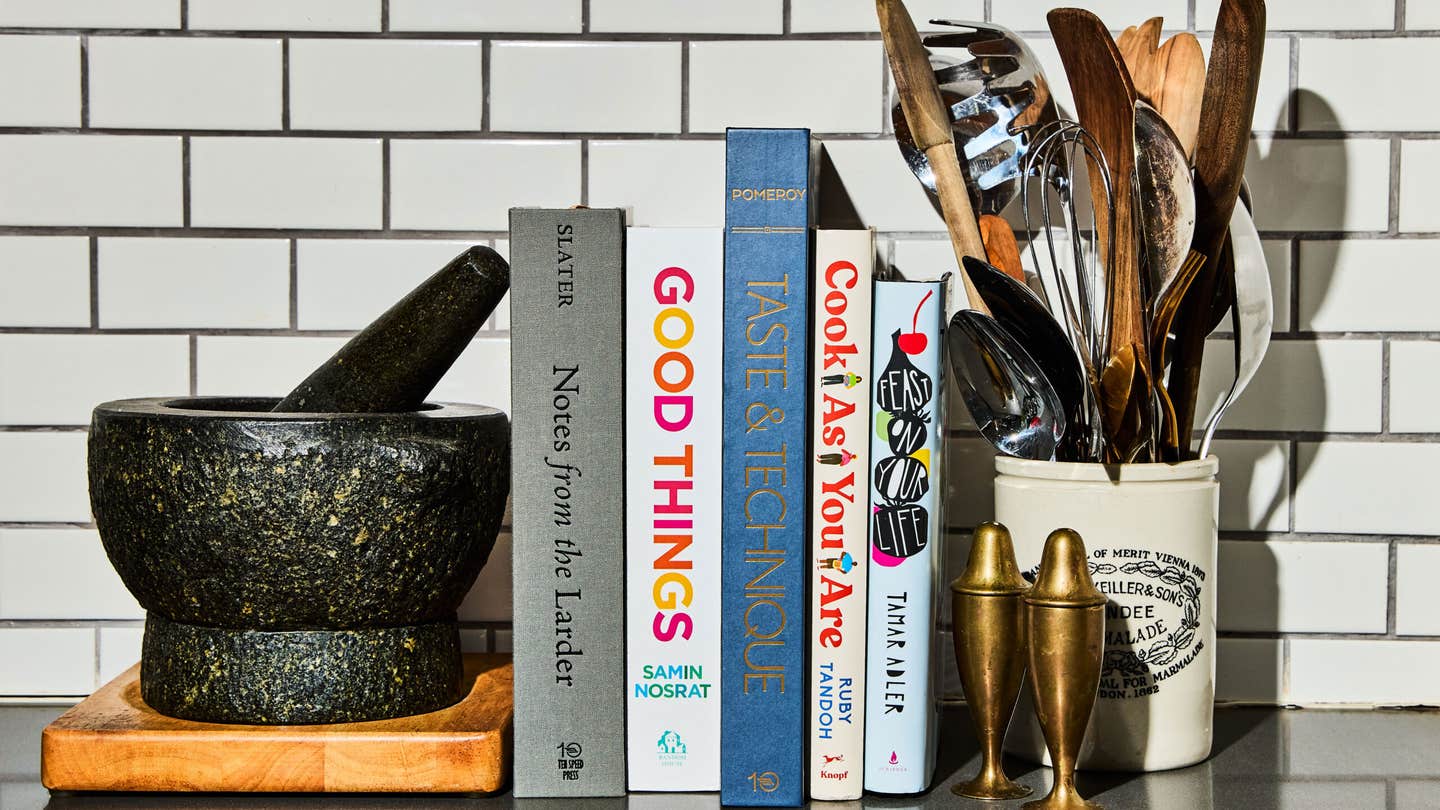
Red Hot
It's no surprise that Jane Butel was one of the first people to write extensively about chili and other Tex-Mex and Southwestern favorites. After all, her family played a major role in shaping and defining the Wild West, where chili has ruled for centuries: her grandfather worked for the Santa Fe Railroad Company, and her grandmother recorded the recipes of Pueblo Indians. For the past 30 years, Butel has hosted a handful of cooking programs, written almost two dozen cookbooks, and inspired students at her Albuquerque-based culinary school. Now, with the second edition of her book Chili Madness to be released in January, SAVEUR decided to revisit some of Butel's best chili recipes and to learn why she became such a devotee of the dish in the first place.
**When did you start eating chili?
**
I grew up with hot, spicy flavors. My mother was from Corpus Christi, Texas, and was raised by Mexican nannies, so some of her earliest foods were tamales and chili. My daddy loved spicy food, too. Chili has always been my absolute favorite.
**How did you become so interested in Southwestern foodways?
**
It seems to run in the family. At the turn of the century, my grandparents lived here in Albuquerque. My grandma was curious about American Indian cuisine. She befriended several Pueblo Indian women to learn about their cooking traditions and ended up recording recipes for red and green chile sauce, sopaipillas, and pozole, among other things. She passed the recipes down to my mother, who passed them on to me. Ultimately, most of those recipes found their way into Tex-Mex Cookbook, which I published in 1979. I opened my cooking school a few years later and haven't stopped since.
How **did chili become so popular?
**
Easy. It's hearty, filling, and relatively inexpensive. In the early 19th century, free land in Texas was advertised in Europe. Germans and other Europeans came over with herds of cattle, not knowing that there would be no place to sell them. At that point, railroads had not yet been built, and there was no way to transport them. So, they had cattle drives, and the food that fed the cowboys was chili. It was pretty basic—just cubes of lean beef, onions, garlic, red chiles, and cumin. They'd make a huge vat of it and eat it morning, noon, and night for the whole trip.
**So, cowboys invented chili?
**
Americans Indians probably made the earliest versions of chili as we know it today. They discovered that red chiles helped to preserve deer and elk meat. The cowboys likely learned from that, only they used cattle instead.
**What other historical anecdotes about chili can you share?
**
A lot of interesting chili history took place in San Antonio, Texas. Starting in the early 1800s, people would buy chili from "chili queens", Mexican women who were also considered to be women of the night. They were beautiful, so chili became very appealing to the guys who were traveling through town. It was also popular in prisons around that time because it could be made with the cheapest ingredients. Because of chili's association with both the chili queens and prisons, the San Antonio school board decided to ban it in the school system around the time of the Civil War. The ban lasted for about 25 years.
**What should home cooks keep in mind when making chili?
**
First of all, you don't ever want to use a lid. You want a heavy pot with a flat bottom and straight sides. Animal fat tends to work better than oil because oil doesn't let the flavors blend as well. So, natural animal-based fats, such as lard, beef fat, and butterfat, are the best because they allow the flavors to spread out more evenly. You can also use butter or Crisco. If you're using ground chiles, remember to take the pot off the burner when you add them because the same degree of heat that sautes an onion will burn chiles.
**What's the difference between Cincinnati-style chili and the Texas kind?
**
In Texas, it's simple. They use cubed beef, ground chile, onion, and garlic. There's a line in the "Chili National Anthem", a song written by a raunchy Houston songwriter, that goes, "Don't give me no beans, that would be obscene." That means that with most Texas-style chili, beans are either omitted completely or chili is served on top of beans. The Greeks who emigrated to the U.S. in the early part of the century are usually credited with creating Cincinnati-style chili. It's composed of ground beef and typical Mediterranean ingredients like cinnamon, tomato, and allspice, and it's often served over spaghetti or onions with cheese and beans. There are regional adaptations everywhere. In the Southwest and in some Midwestern states, pinto beans are commonly used. Farther north, it's kidney beans.
**When do you make chili?
**
It's great for tailgating or the Super Bowl or any sort of party. And there are so many ways to serve it. Sometimes I'll class it up and do what I call "the three C's": chili, caviar, and champagne. At one end of the table I set out caviar and champagne and at the other end, chili. It's fun, like wearing denim and mink at the same time.
I also like to serve it with "mixin's" and "fixin's", like chopped onions, coarsely grated cheese, pickled jalapeños, sour cream, and wedges of lime. Sometimes I add avocado chunks.
Keep Reading
Continue to Next Story










